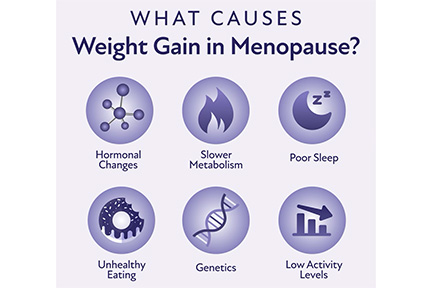
Menopause alters physiology in profound ways, reshaping metabolism, redistributing fat, and unsettling the delicate balance of hormones that once maintained equilibrium.
The passage of time inevitably modifies how the body stores and burns calories, yet the frustration accompanying these changes is not simply a matter of vanity—it is a deeply personal confrontation with an evolving identity.
What once worked effortlessly—dietary moderation, occasional exercise—becomes an inadequate defense against weight accumulation.
The shifting hormonal environment affects more than weight alone. Fatigue, temperature fluctuations, and cognitive fog create an intricate web of challenges, often leading to a sense of bewilderment. No single explanation accounts for the increase in abdominal fat, nor does a singular approach counteract it. Instead, a nuanced perspective, informed by endocrinology and gerontology, acknowledges that metabolic deceleration demands adaptation rather than resistance.
Hormonal Influence on Body Composition
As estrogen declines, its protective effect on muscle preservation diminishes, leading to a gradual loss of lean tissue. This subtle erosion of muscular integrity decreases resting energy expenditure, making previous habits insufficient. Simultaneously, insulin sensitivity weakens, complicating the regulation of blood sugar and enhancing the likelihood of adipose accumulation. Sleep disturbances—exacerbated by progesterone fluctuations—worsen cortisol regulation, further entrenching metabolic inefficiencies.
The psychological impact of these physiological shifts cannot be disregarded. Appetite regulation becomes unpredictable, with ghrelin levels intensifying cravings and leptin failing to signal satiety effectively. Stress amplifies these tendencies, reinforcing cycles of weight gain that appear impervious to intervention. Without an understanding of these biological intricacies, frustration can evolve into resignation.
The infographic below created by Winona visually outlines the primary contributors to menopausal weight gain, breaking down the underlying physiological mechanisms. Created as part of Winona’s commitment to empowering women through science-backed insights, this resource provides clarity on how shifting hormones influence metabolism, appetite, and body composition. Understanding these factors makes it easier to approach solutions with an informed, strategic mindset.

Integrating Practical Adjustments
Dietary modifications must extend beyond calorie reduction. Protein intake supports muscular retention, while fiber stabilizes glycemic fluctuations. Micronutrient density—magnesium, vitamin D, omega-3 fatty acids—contributes to overall homeostasis, fostering an internal environment conducive to metabolic efficiency. Ultra-processed foods, with their inflammatory properties, undermine these efforts, necessitating a return to whole, nutrient-rich sustenance. Make sure to also consult your healthcare provider, like an Atlanta OBGYN at Roswell OBGYN, to help you in a professional way.
Physical activity, tailored to accommodate shifting endurance levels, must prioritize resistance training. Unlike cardiovascular exercise, strength training preserves muscle tissue, mitigating metabolic slowdown. Low-impact disciplines such as yoga and tai chi enhance flexibility and balance, counteracting the decline in proprioception that accompanies aging. Walking, often underestimated, remains one of the most effective interventions for maintaining insulin sensitivity and cardiovascular stability.
Circadian rhythms, long overlooked, exert considerable influence over metabolic health. Sleep deprivation exacerbates hormonal imbalances, making restorative rest a critical yet frequently neglected component of weight management. Evening routines that emphasize relaxation—consistent sleep schedules, reduced screen exposure, controlled light environments—aid in melatonin synthesis, enhancing sleep quality.
The intricate relationship between hormones, lifestyle, and weight requires more than simplistic solutions. Understanding the root causes of metabolic change makes it possible to develop sustainable strategies that align with the body's evolving needs.
